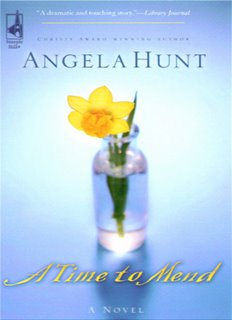
Photo: Sophia, a little girl who was visiting our house last week. Isn't she precious? Charley loved her. :-)
On to the Q&A: Linda asked: Do you ever have trouble telling your characters goodbye? I really get absorbed in my reading. And I always hate to come to the end of the book, and even though you always end it well, I frequently want to keep the story going, just to know more about what happens. The folks seem so real.
Thank you, Linda! Usually by the time I'm finished with a book, I am really ready to say goodbye. After all, I go through it four times before I send it in, and then a couple of more times after I do revisions and check copy edits. I suppose I would miss the characters in a book if I weren't already getting excited about the characters and plot of the NEXT book! For instance, I'm missing Mt. Dora a little bit now, but I'm really eager to start my next project . . . plus I know I still have work to do on the final Fairlawn book. That's enough to keep me satisfied.
Linda also asked: how do you decide which books are going to turn into a series - whether it's with the same character, other characters, or subsequent centuries even like Heirs of Cahira O'Connor - and which ones are just stand-alone books?
It all depends upon the story. I always know which books will be series before I even start writing the first book. For instance, there's a story arc that covers all three Fairlawn books--in the first book, Jen inherits the funeral home, in the second book she's in mortuary school, and in the third book she's actually practicing. So there's a big arc that covers all three books, and smaller arcs that cover the individual books.
In the stand-alone novels, there's just one story per book, period. I illustrate whatever I'm trying to illustrate (novels are really just giant metaphors that tell us something about life), and end it. The historical series were planned out in the beginning, too--that each would be linked by a common thread (or ring, or Irish ancestor). In the beginning, I wrote those more "open-endedly," but in those days everyone was writing historical series, so it was more the status quo. If I write a series today, it's by intentional design.
Holly asked: Does the emotion of your topic ever overwhelm you to the point of tears or having to take a break from it?
You bet. I remember meeting my tax accountant while I was writing THE PEARL. She remarked that I looked beat, and I said, "If you only knew what I've been living through . . . " referring, of course, to everything Diana Sheldon, my protagonist, had been living through. When you're creating it, you have to feel it in order to create realistic emotions for your reader.
I often weep when I'm typing scenes where someone is dying . . . and I still cry when I read the end of UNSPOKEN, and I've read it dozens of times. I never walk away from it for too long, however, because it takes time to reinsert yourself into the story world. If I'm away from the work for more than a couple of days, I lose my momentum and it takes too much time to get back to the story world.
Thanks so much for coming along on another BOM! :-) Thanks, too, for your questions and comments. It's nice to know I'm not just rambling to myself!
~~Angie































